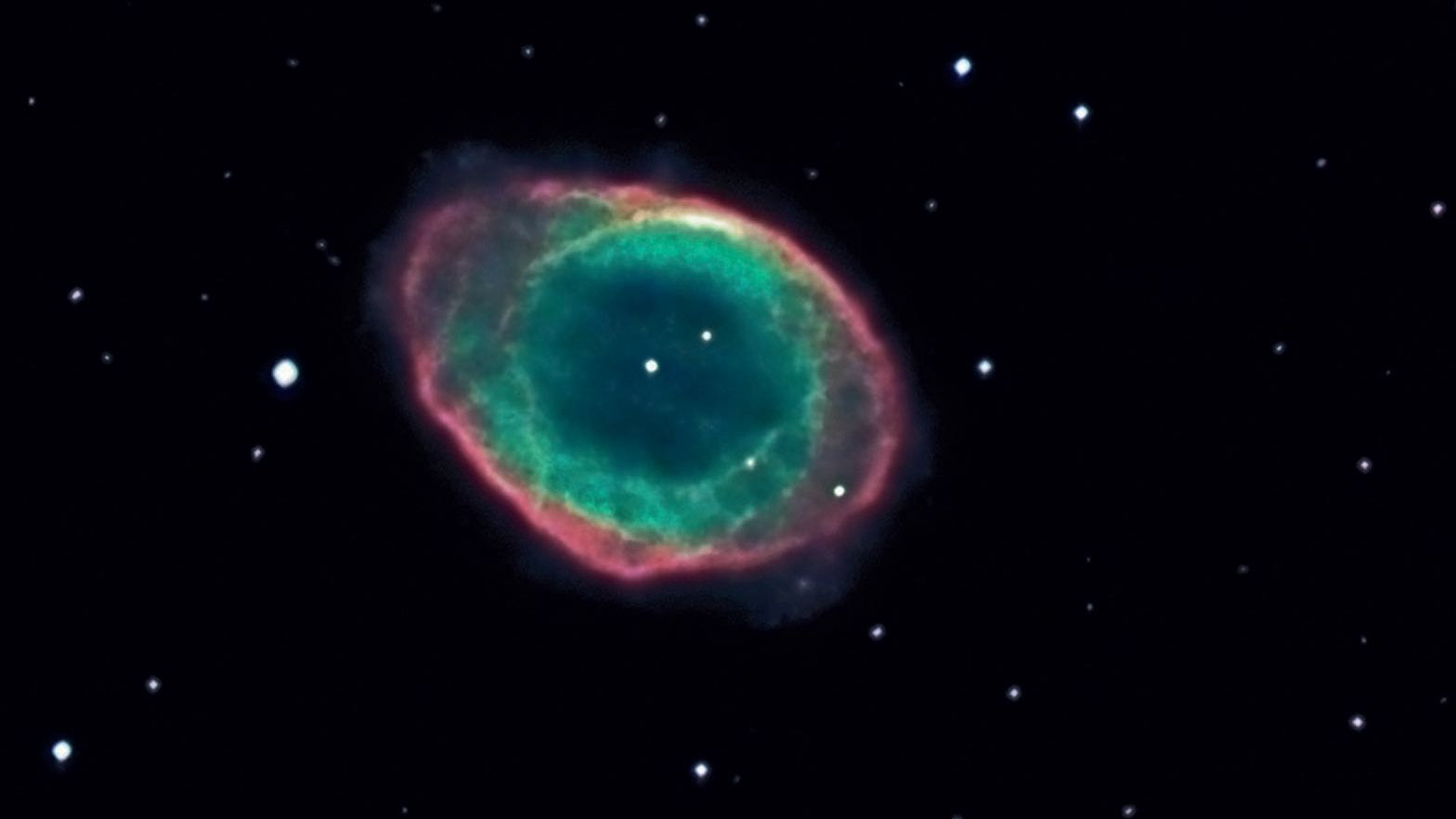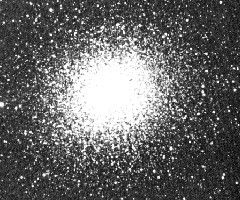



| Observer: | Tom Campbell |
| Location: | Iola, Kansas (Long: 95°24'W Lat: 37°55'N) |
| Equipment: |
Simmons 10x50 binoculars 60mm refractor 8" Discovery DHQ dob |
| Eyepieces: | 1.25" Plössls - 25mm (49x), 15mm (81x), 10mm (122x), 6.5mm (188x), 4mm (305x) |
| Time: | 10:15pm - 11:50pm CDT (03:15-04:50 UT) |
| Transparency: | Clear (8/10) |
| Seeing: | Stable (8/10) |
| Weather: | Temperatures in the upper 60s. There was no breeze. |

I didn't really have a set observing plan tonight. I decided to take out all of my astro-gear and get a few comparison views. I started with Izar in Boötes. I remember it being difficult last year in my 60mm refractor. But since I had received my 1.25" Plössl eyepieces with my dob, I really hadn't played with my old telescope much. I put in my 10mm eyepiece (70x) and sure enough, the faint companion was easily detectable. Decent eyepieces can make all the difference in the world on small telescopes. If companies would supply a couple of these eyepieces with their "department-store" telescopes, I think there'd be a lot more amateur astronomers out there.
One thing that I'd forgotten about my old refractor was how narrow the field of view was. f/11.7 is a LOT different than f/6. The twilight sky was beginning to turn into night, so I took a seat at my dob and began.
| NGC 6543 (Cat's Eye) | Draco | Planetary Nebula | 10:15pm CDT |
| RA: 1758.5 | Dec: +6638 | Mag: 8.8 | |
 |
At 305x, the nebula is aqua blue and is oval in shape. No real detail is visible, except for some hints of color variations. There wasn't any hint of the Cat's Eye details that I've seen in larger telescopes. Being in Draco, it more closely resembled a Dragon's Egg tonight. |
||
| M57 (Ring) | Lyra | Planetary Nebula | 10:30pm CDT |
| NGC 6720 | RA: 1853.6 | Dec: +3302 | Mag: 9.7 |
 |
This nebula is oval, with a bright ring around the outer edges. Inside the ring it appears dark gray, with just a spot of black near the center. The central star wasn't detectable, but there was a faint star visible right outside the nebula. |
||
The sky was pretty transparent, so I thought I'd try my hand at some binocular objects. There are a couple of binocular observing lists that I've fallen behind on, and tonight looked like a great opportunity to catch up. Binoculars are ideal for urban backyards, since they are so portable. I grabbed my 10x50s out of the case and started darting across the yard, trying to get the best view. |
|||
| M13 (Great Hercules Cluster) | Hercules | Globular Cluster | 10:45pm CDT |
| NGC 6205 | RA: 1641.7 | Dec: +3628 | Mag: 5.8 |
 |
The cluster looks like a round fuzzy patch, a little larger than stars. No individual stars could be resolved, of course, at a mere 10x, but it was obvious in the field of view. |
||
| M5 | Serpens | Globular Cluster | 10:50pm CDT |
| NGC 5904 | RA: 1518.6 | Dec: +0205 | Mag: 5.7 |
 |
This cluster is also pretty obvious, but a bit smaller than M13. A bright star lies nearby, making M5 look like part of a lopsided double. |
||
| M39 | Cygnus | Open Cluster | 11:00pm CDT |
| NGC 7092 | RA: 2132.2 | Dec: +4827 | Mag: 4.6 |
 |
This cluster is fairly easy to find. There's a wavy line of fairly bright stars that wind their way down towards M39. About a half dozen stars are visible in the cluster, in a rough V shape. With averted vision, a few more stars pop out. |
||
| M92 | Hercules | Globular Cluster | 11:15pm CDT |
| NGC 6341 | RA: 1717.1 | Dec: +4308 | Mag: 6.5 |
 |
This globular is much smaller than M13, and in fact looks like a fuzzy star. You can tell it is a cluster, however, because the stars come to a sharp point, but this still looks like its out of focus. |
||
| M4 | Scorpius | Globular Cluster | 11:20pm CDT |
| NGC 6121 | RA: 1623.5 | Dec: -2631 | Mag: 5.4 |
 |
This cluster is faint, but is definitely there. It is large, about the size of M13. The shape is difficult to discern because of its faintness. It did appear to be not quite round, but that may have been averted imagination, since I know what M4 really looks like. |
||
| M11 (Wild Duck) | Scutum | Open Cluster | 11:30pm CDT |
| NGC 6705 | RA: 1851.1 | Dec: -0616 | Mag: 5.8 |
 |
This cluster is a somewhat faint patch of light. No individual stars are visible. |
||
| IC 4665 | Ophiuchus | Open Cluster | 11:35pm CDT |
| RA: 1746.0 | Dec: +0543 | Mag: 4.2 | |
 |
This open cluster is large, with several bright stars. It's shape is irregular, with about a dozen stars visible. This is a nice binocular object. |
||
| NGC 6633 | Ophiuchus | Open Cluster | 11:40pm CDT |
| Mel 201 | RA: 1827.7 | Dec: +0634 | Mag: 4.6 |
 |
This cluster is fairly faint, with a brighter star close by. With direct vision, only a couple of stars can be made out, nestled in a patch of haze. With averted vision about a half dozen stars are visible. |
||
| Cr399 (Coathanger) | Vulpecula | Asterism | 11:45pm CDT |
| Brocchi's Cluster | RA: 1926.2 | Dec: +2006 | Mag: 5.0? |
 |
This looks really nice in binoculars, fitting well in the field of view. A group of six stars are aligned in a row, making a hanger, and another group of four stars makes the hook. |
||
It turned out to be a beautiful night. The Summer Triangle was greeting me in the low Eastern sky, making me long for the glorious views of the Milky Way. Still, I felt like turning in for the evening. It would be high in the sky soon enough.